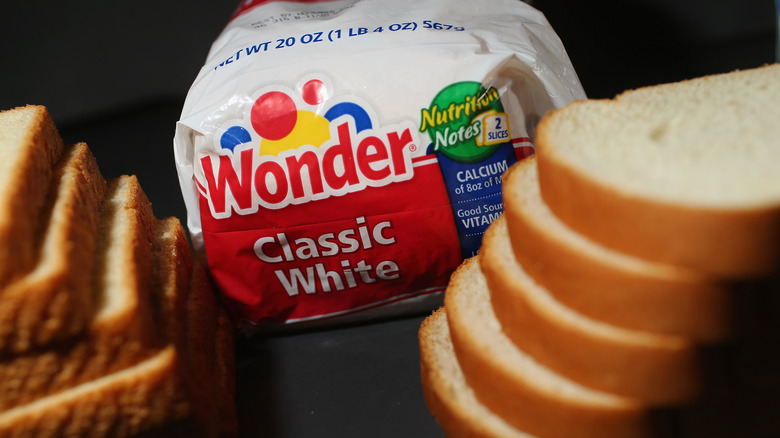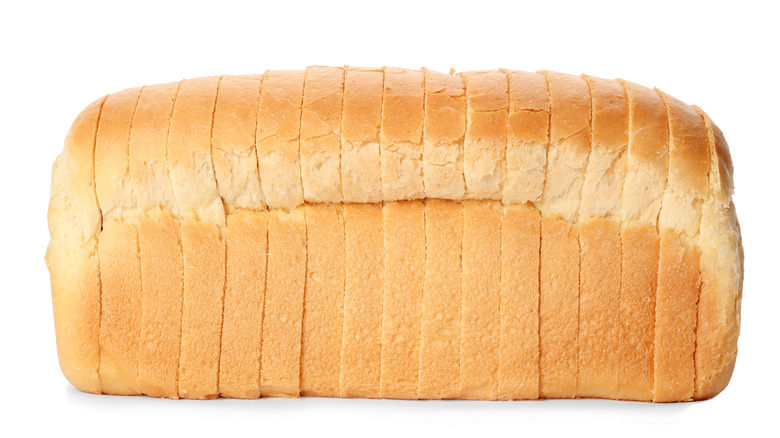Did Wonder Bread Really Invent Sliced Bread?
Who hasn't ever heard of the phrase, "the best thing since sliced bread"? While that vernacular might be common, the history behind it — and who exactly invented sliced bread — is not as cut and dry. Although many people often believe that Wonder Bread brought this delicacy to the table, thanks to it being the first brand to majorly distribute the pre-cut loaves (via History.com), the reality is quite different. It all goes back to a time before that colorful package came to market. In fact, Otto Rohwedder was the man we have to thank, according to the New York Times. Around 1928, he invented the multi-blade power tool to automatically slice fresh loaves, and his friend who owned Missouri's Chillicothe Baking Company first put this pre-cut bread up for sale. Though some people were skeptical at first (assuming slices would go stale quicker), the convenience quickly caught on with consumers.
What is true though is that Wonder Bread did popularize the convenient, mass-produced bread option and, as such, many people associate the brand with the invention (kind of like Kleenex). Whether Wonder Bread is "everyone's favorite sliced bread" is a true statement or just a marketing tool, it definitely has become part of food lore after it started taking off in the 1930s. It was even banned during World War II when the government was trying to conserve resources like the paper used in the bread's packaging.
Bread isn't just for sandwiches and toast
Thanks to sliced white bread, life has become a whole lot simpler, too. Just think of the time you save grabbing slices for quick sandwiches and French toast. But, did you know there are other uses that ensure no slice ever goes to waste (not even the heels)? With a little creativity, there's actually some pretty cool household hacks that you can do with sliced bread.
For example, Country Living says that bread can help remove stains. Apparently, a rolled up ball of white bread is a type of natural eraser thanks to the spongy consistency and the gluten, which can absorb dirt (see it's good for something!). Try it on dirty walls, cabinets and cupboards, and more.
Food and Wine also has several ideas for non-traditional uses of sliced bread — from removing splinters to bringing stale marshmallows back to life. Though, their idea to stuff bread into your mouth while cutting onions to prevent tearing up is a little ridiculous. There are other onion crying hacks that are a little less of a choking hazard.

